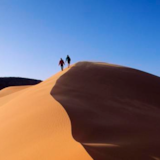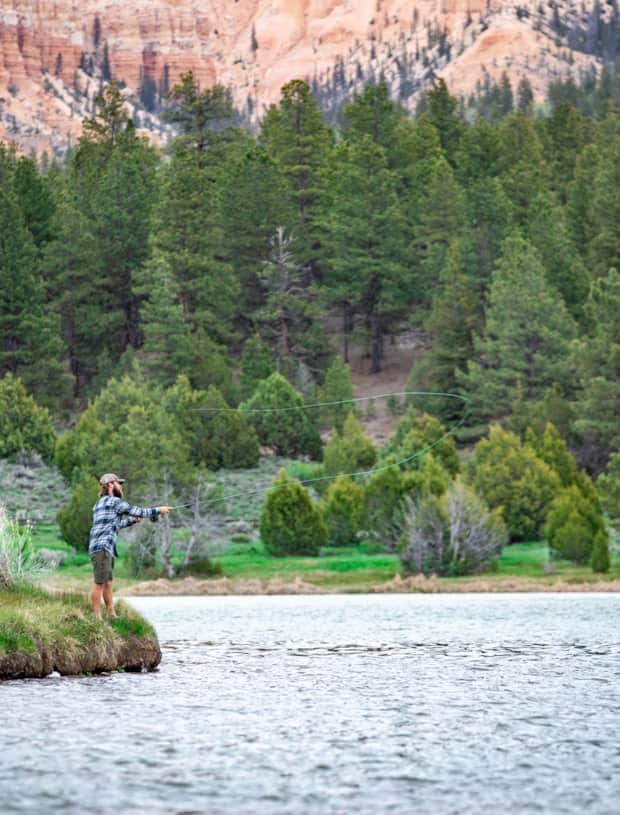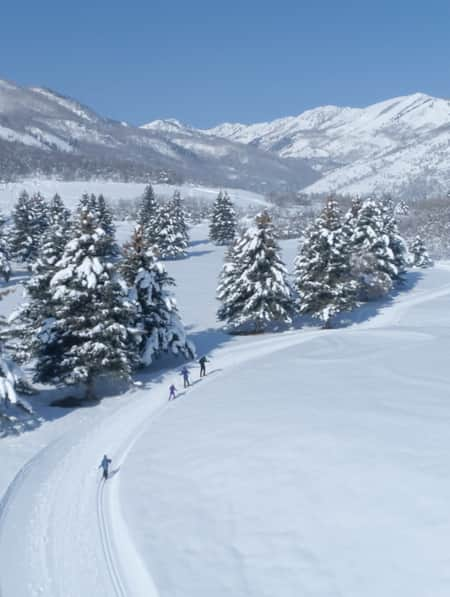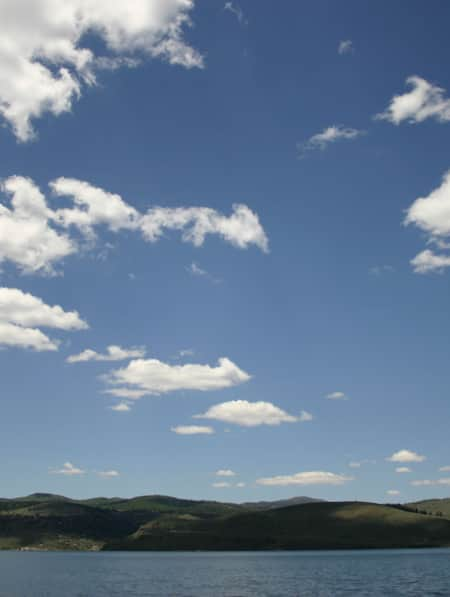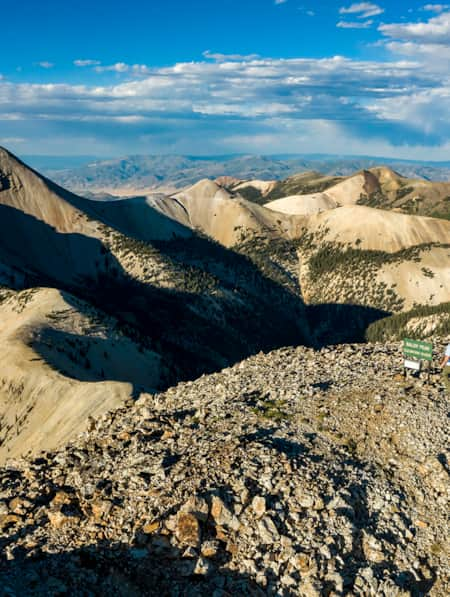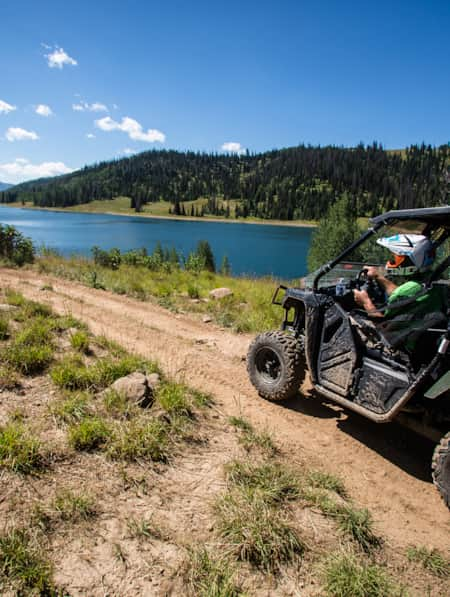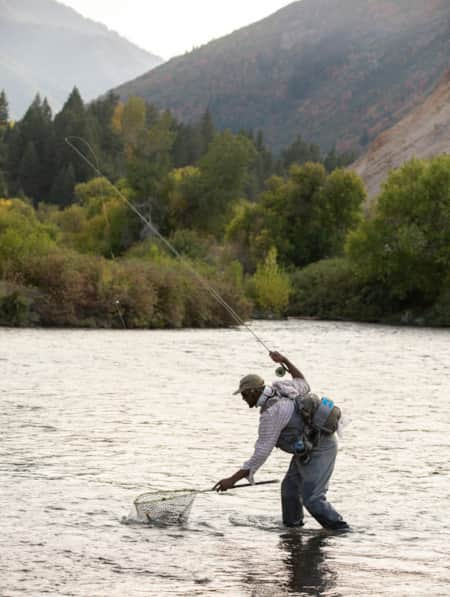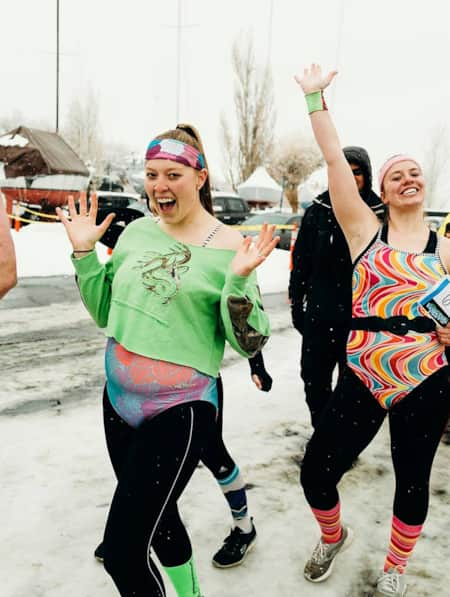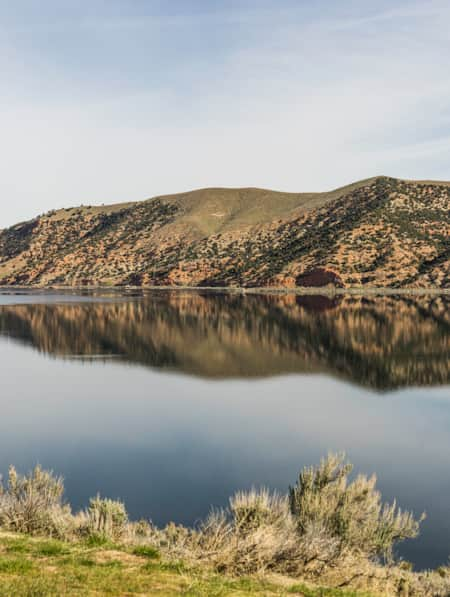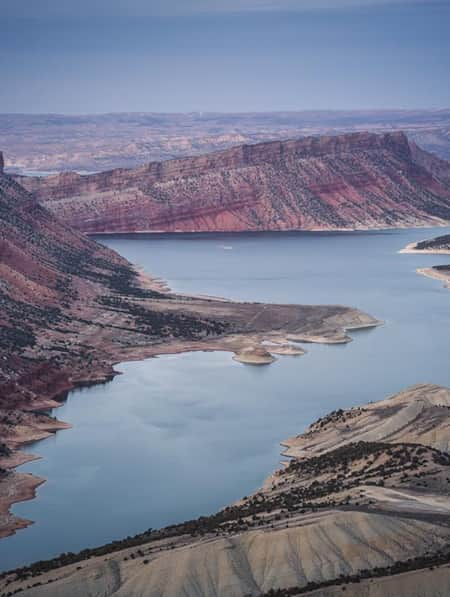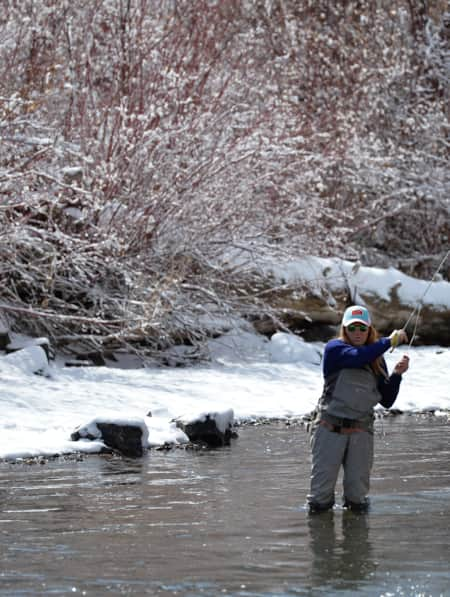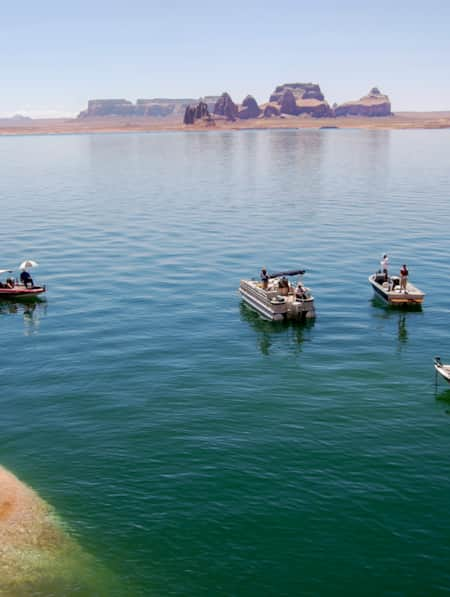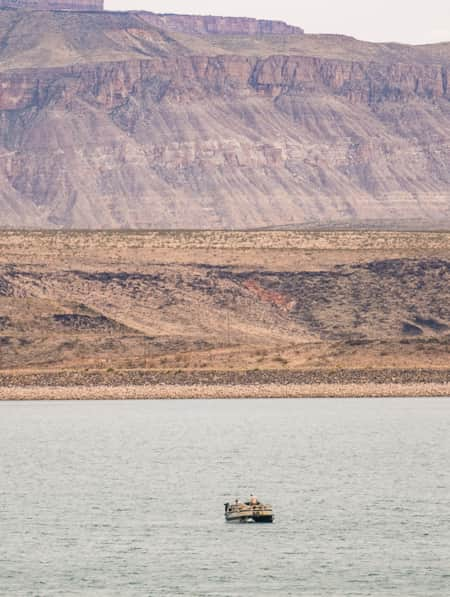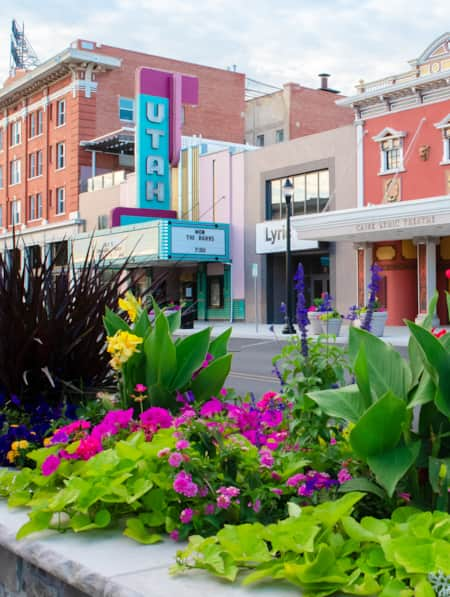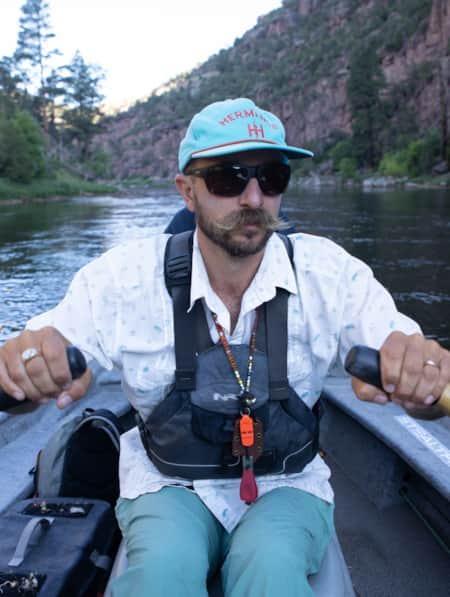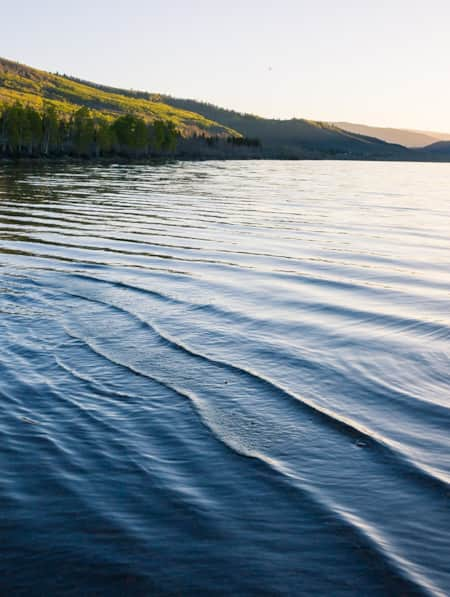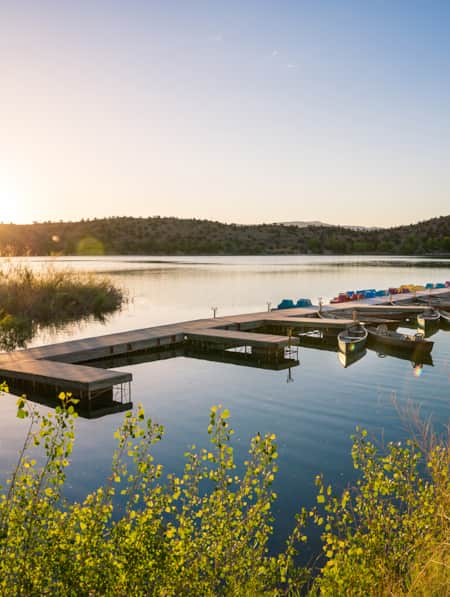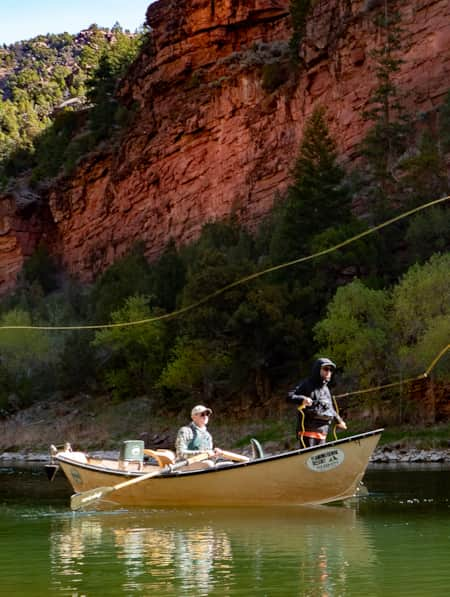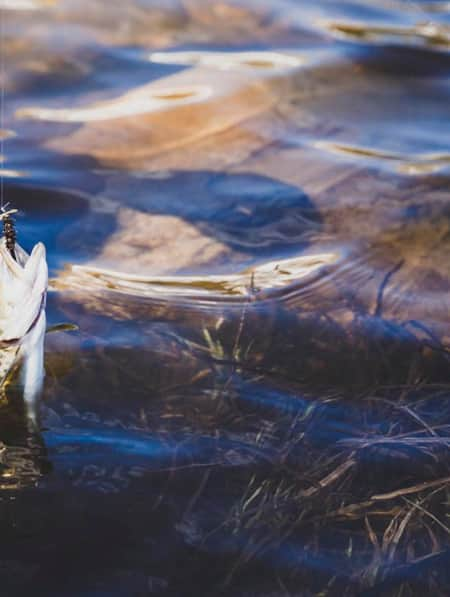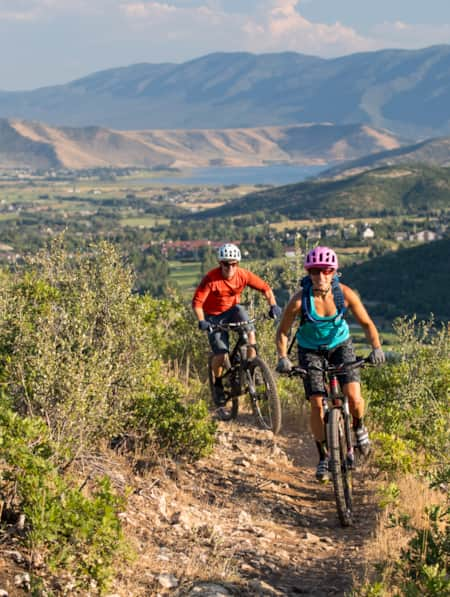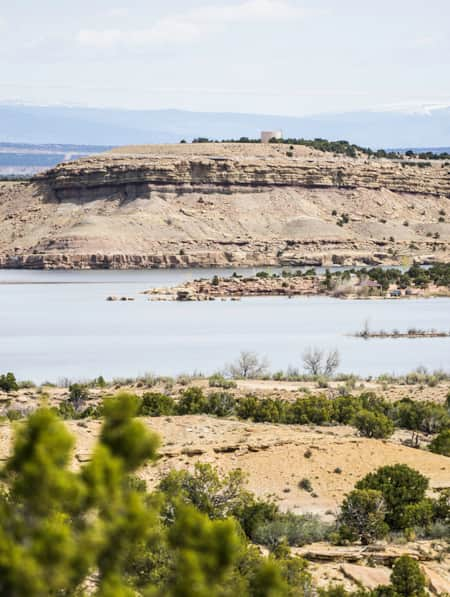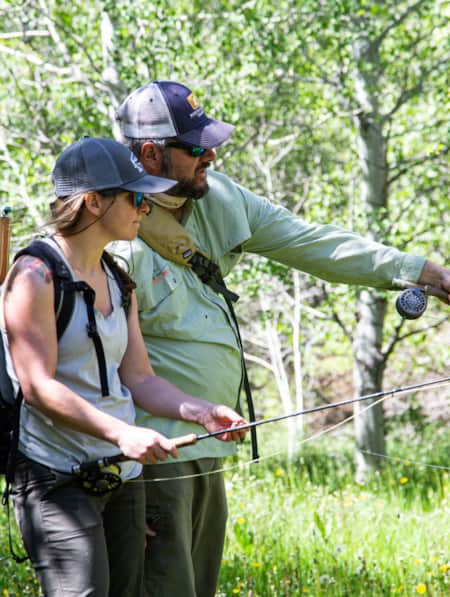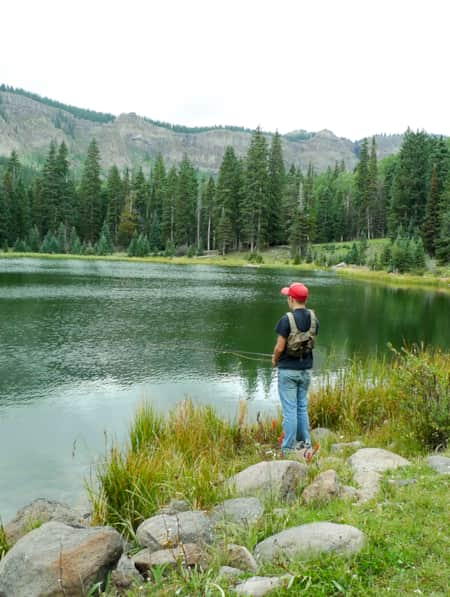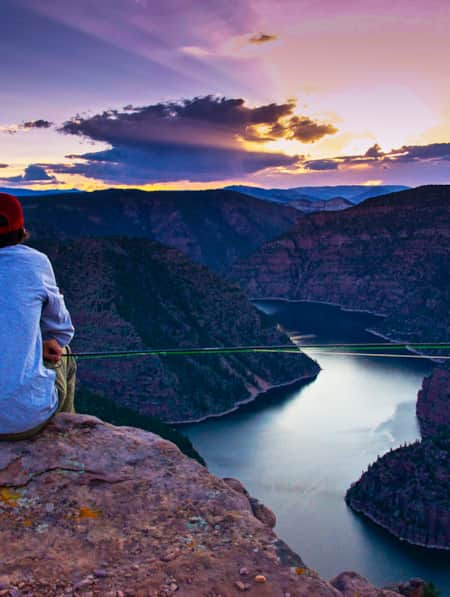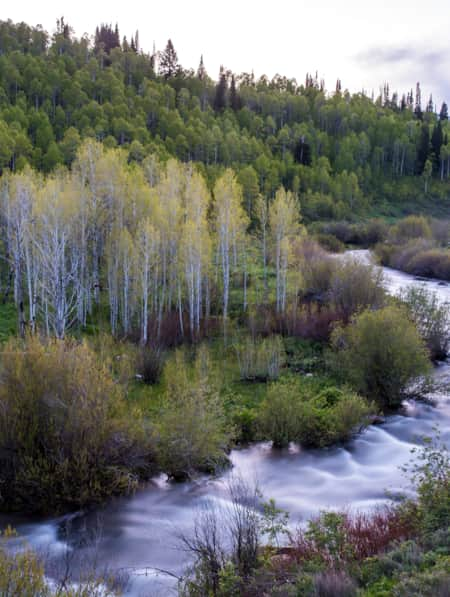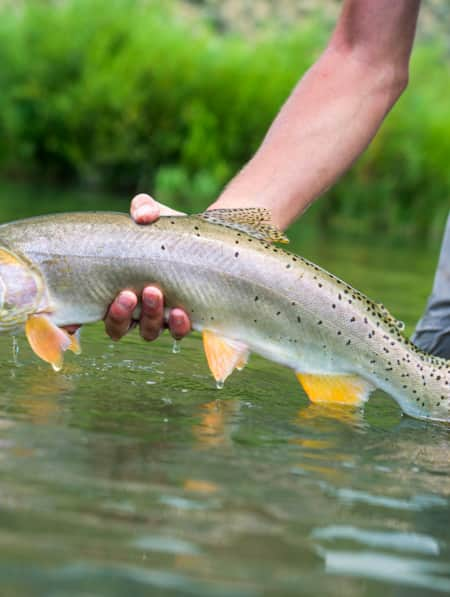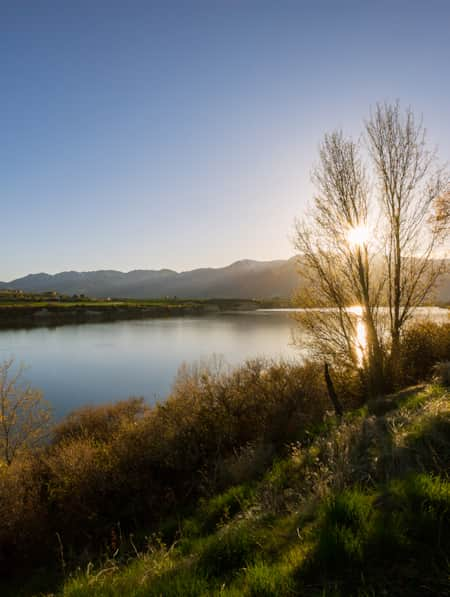Fly Fishing Guide to The Green River Less Traveled
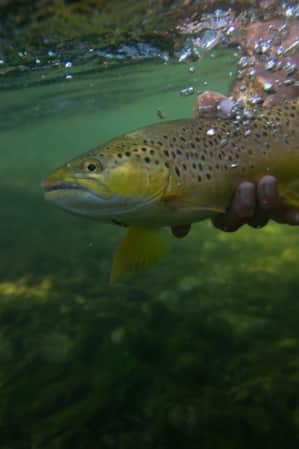
Green River Sections Explained
Three sections — Section A, Section B and Section C — take floaters between the Flaming Gorge Dam and the Colorado border. The dam to Little Hole is Section A. From Little Hole to Indian Crossing in Browns Park is Section B. And Section C goes from Indian Crossing to the state line, also in Browns Park.
Here’s a pro tip: Section A is undoubtedly its most renowned and frequented water. However, most Green River fly fishing guides will tell you those willing to put in a little effort can find fewer people and bigger fish downstream of Little Hole in the river’s lower sections.
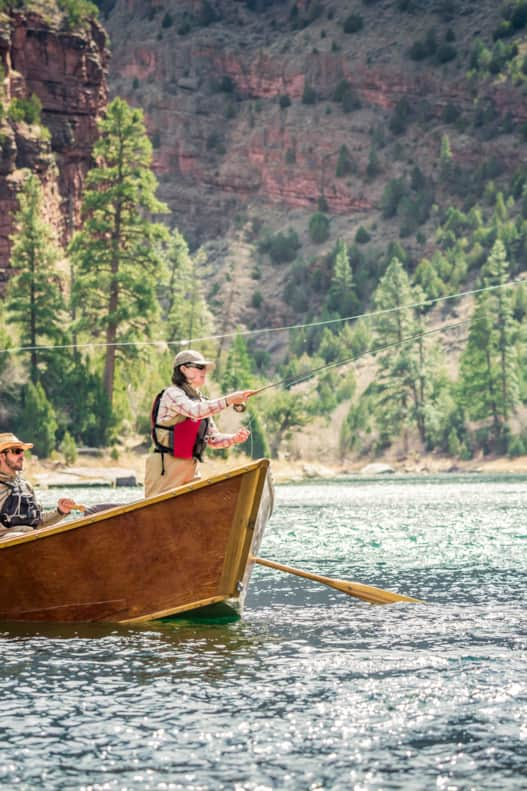
Casting on the Green River.
Photo: Dan Ransom
Section A and Little Hole Trail: Flaming Gorge Dam to Little Hole
When most anglers talk about the Green below Flaming Gorge they are referring to Section A. This is undoubtedly the Green’s most classic water: vertical red rock walls descending straight into the depths of the river’s crystal clear pools. The flowing water is so gin clear that with overhead light, one can spot fish 10 feet below the surface. This is a trout stream like no other in the sense of its remarkable sight fishing.
On a typical day you will have a chance to hook brown and rainbow trout along with whitefish. People have been known to reel in carp and the few and lucky have even landed cutthroat trout.
The Little Hole boat ramp is seven miles below the dam and is a good spot to hit the river. On foot, walk up and down the scenic canyon to find a perfect spot to cast away.
Insect hatches are almost a constant so be on the lookout for what the fish are eating when you select your tackle. Scuds work throughout the year. Blue-winged olive hatches are common in the spring. Cicadas, ants, hoppers, and other dry patterns are good during the summer months.
The Little Hole Trail is a well-used, well-maintained, seven-mile path along the river that runs between the dam and Little Hole. It’s great for fishing access, but it’s also great for families. So if the kids or significant other are not feeling the angling vibe, they can follow this awesome trail through the grassy banks while you fish. The towering red walls and mature ponderosa pines make a perfect backdrop for seeing river otters in the water and birds of prey soaring high above.
But, like any great trout stream, the Green’s most iconic section tends to get a lot of attention. Besides the typical drift boat traffic, there will be raft trips, kids in tubes and kayakers in the summer. At peak times, it feels like you could walk across the river on the tops of all the boats. The great majority of these floaters will take out at Little Hole.
Tackling Section B: Little Hotel to Indian Crossing in Browns Park
As one floats downriver, the cliff walls gradually get smaller, the water loses a little clarity and the river eventually becomes a winding meadow stream. But, some other things start to change as well: the crowds start to filter out, the fish get bigger (browns in the 25-30” range are caught every year in Section B and C), and there seems to be even more terrestrial insect life.
What does this equate to? Sections B and C allow anglers to get away from the crowds and target bigger fish consistently.
As the river wraps around the bends near Little Hole, it becomes known as Section B. It is perhaps the most remote of the three sections because the take-out at Indian Crossing is down a long gravel road that can take up to an hour to drive in and out of (which results in an expensive $90 shuttle). As such, you may not have to share this section with many other river goers.
With the numerous campgrounds found in Section B (Bootleg and Cottonwood are two favorites), many floaters opt to float two days with an overnight campout to make the long drive and expensive shuttle fee worthwhile. Hardcore anglers who like to fish from sunup to sundown can make a long day out of it and float the A and B in one go (15~ miles).
Section B is roughly divided into two halves: before and after Red Creek. The four miles before the entrance of Red Creek are fairly similar to Section A, with large rock walls, deep holes and swirling back eddies that make great conditions for dry fly fishing.
The entrance of Red Creek into the Green creates the river’s largest rapid, which can be very difficult to navigate during low water because of multiple large boulders. Like most on the Green, this section should only be attempted by experienced rowers. As the name implies, the creek often dumps in thick, red water during rainy periods, particularly during the spring runoff. Be forewarned: There are some places where the water below Red Creek is unfishable, so always check with a local fly shop or guide before heading out.
When the water is clear, there can be some exciting fishing opportunities in the soft pockets adjacent to and below the rapid. The pace of Section B below Red Creek begins to mellow out, the sharp rock edges start to be replaced by grassy banks and numerous islands are spread throughout the river. Many islands have ample riffle structures around them and are a good place to spend a couple of hours wading and casting rods.
"The water is so gin clear that with overhead light, one can spot fish 10 feet below the surface."
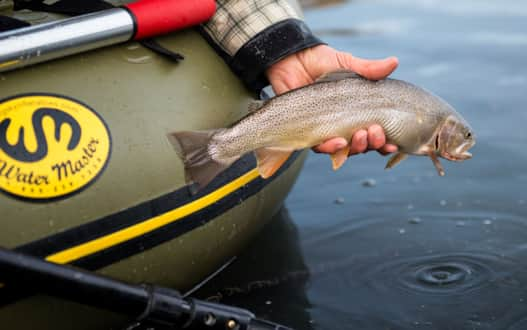
A rare fine-spotted cutthroat pulled from the Green.
Photo: Courtney Boice
Moving on to Section C: Indian Crossing to the Colorado/Utah Border
Section C meanders through the high desert valley of Browns Park down to the Colorado state line, with the most of the fishing occurring between Indian Crossing and Swallow Canyon boat ramps. There are multiple accesses, so floats of varying lengths can be arranged.
The most common water types throughout the section are mellow runs broken up my shallow riffle sections. Most of the fish will tend to congregate in the structure found near the riffles or tight to the banks. Because this is the shallowest section and the farthest from the dam, the water is the warmest, and you will catch almost exclusively brown trout while floating C.
Although the fish count is quite a bit lower here than in other sections, year in and year out, this is where the river’s largest fish can be found. At certain times, particularly with terrestrials, dry fly fishing can be the most effective method to fish Section C (ants and beetles tend to outperform hoppers).
If anglers find themselves out in the late evening, fishing with mouse patterns will move quite a few big browns. While finding them may sometimes be difficult, anglers who hunt long enough are often rewarded with the fish of a lifetime while floating Section C. In either B or C, streamers are a consistent method for getting into fish if nothing is happening on top.
John Jarvie Historic Ranch: A Green River History Lesson
While in Browns Park, be sure to stop by the John Jarvie Historic Ranch to explore frontier life in the 19th Century. During the summer, Bureau of Land Management guides offer daily tours of the general store, blacksmith shop, stone house, dugout, water wheel and cemetery.
Whether you wade in from the shores or drift the Green River in a boat, you will not regret casting your line across these magical waters in search of the next big catch. This fishery is simply a must-do, bucket-list destination, however you categorize your life list. Because of the different sections, you can experience it in different ways. Seeking solitude? You can find it here. Bringing along the whole family? The area works for that as well.
Gather your gear, buy your fishing licenses and head to Utah’s Green River for the fishing experience of a lifetime.

